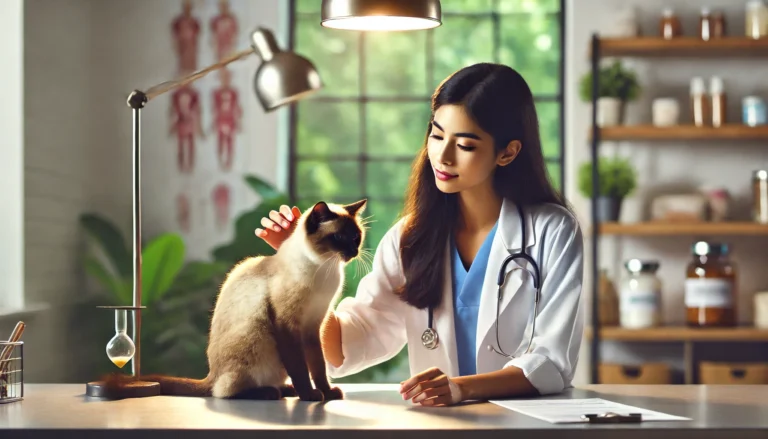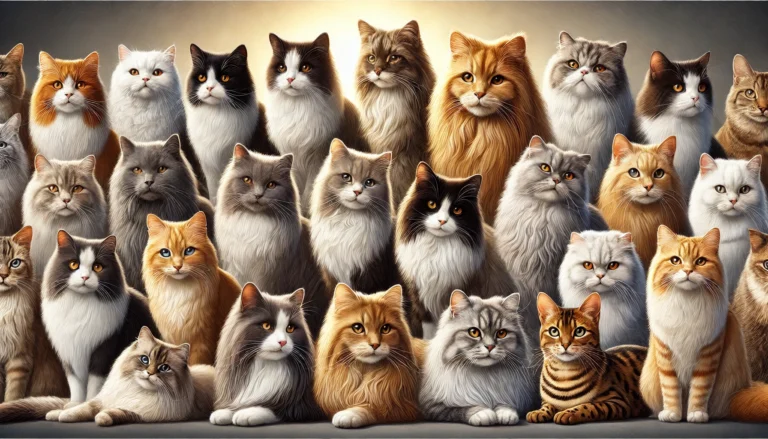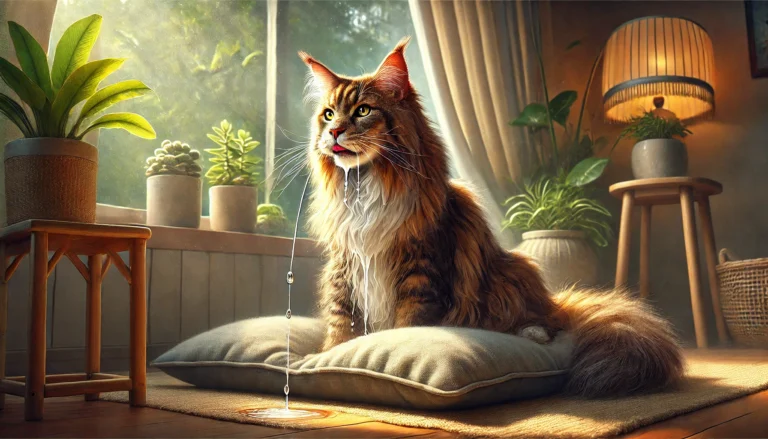Loss of Hair in Cats or alopecia in cats
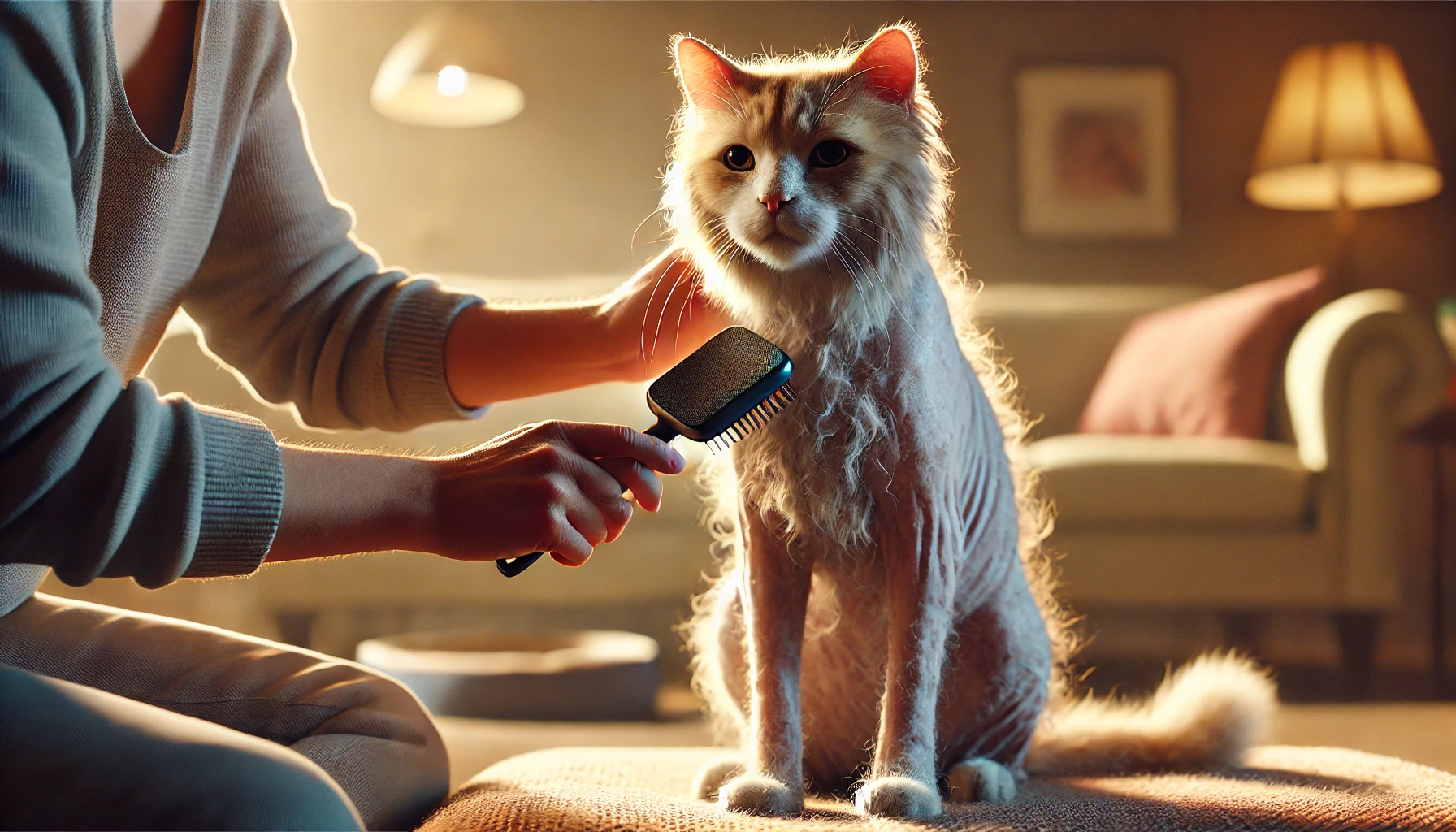
Loss of Hair in Cats, also known as alopecia, is a relatively common problem for pet owners to encounter. While shedding is natural, especially during seasonal changes, excessive hair loss or bald patches may indicate an underlying issue. Whether it’s due to parasites, allergies, stress, or a more serious medical condition, it’s important to address the cause of loss of hair in cats promptly. This article will help you understand why your cat may be losing hair, how to identify the signs, and what steps you can take to treat and prevent further hair loss.
Understanding Cat Coat and Fur Growth
Cats have complex fur that serves more than just a cosmetic purpose. Their fur acts as a protective layer, helping to regulate their body temperature and providing a buffer against UV rays, dirt, and other environmental hazards. A cat’s coat goes through a cycle of shedding, growing, and regrowth that typically aligns with seasonal changes. However, this cycle can be disrupted by various internal or external factors, loss of hair in cats.
The type of coat your cat has can also influence the nature loss of hair in cats. Long-haired cats may show more noticeable thinning or shedding, while short-haired cats may exhibit smaller patches of hair loss. Regardless of their coat type, it’s essential to monitor your cat’s fur health and seek veterinary advice if any issues arise.
Common Causes of Hair Loss in Cats
There are numerous reasons why your cat may be losing hair. Some causes are benign and related to normal shedding, while others may indicate an underlying medical condition. Understanding the potential causes will help you determine the appropriate course of action.
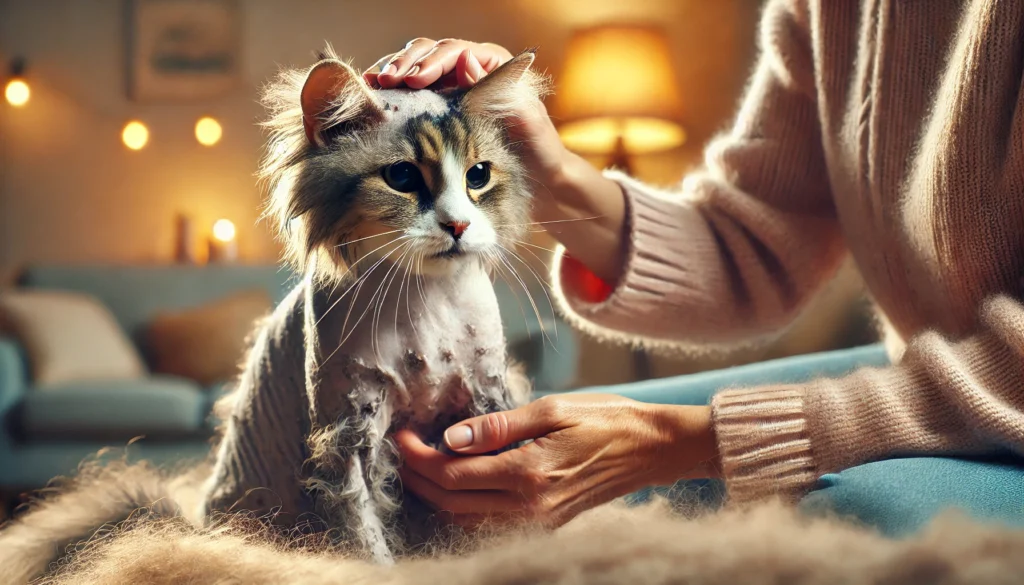
- Fleas and Parasites
Fleas are one of the most common causes of hair loss in cats, particularly if the cat is constantly scratching or biting at their skin. Flea bites can lead to a condition called flea allergy dermatitis (FAD), which causes the cat to scratch and lick excessively, leading to bald patches. Other parasites like mites, ticks, and lice can also cause hair loss and skin irritation. - Allergies (Food, Environmental)
Allergies are another common cause of hair loss in cats. Cats can develop allergies to certain foods, flea bites, or environmental triggers like pollen, dust mites, or mold. When a cat experiences an allergic reaction, it often leads to itching, hair loss, and inflamed skin. Identifying and managing the allergen is key to resolving the issue. - Skin Infections and Fungus
Infections caused by bacteria or fungi can lead to hair loss. Ringworm, a fungal infection, is notorious for causing circular bald patches on a cat’s body. Bacterial infections can also damage hair follicles, leading to patchy or complete hair loss. - Hormonal Imbalances (Hyperthyroidism, etc.)
Hormonal imbalances are another cause of hair loss. Hyperthyroidism, which affects older cats, can lead to thinning hair or patches of baldness. Cushing’s disease, diabetes, and other hormonal disorders can also disrupt the natural growth cycle of a cat’s fur. - Stress and Anxiety
Stress and anxiety can manifest in many ways, one of which is excessive grooming. Cats under stress may lick or bite themselves to the point of hair loss. Moving, changes in routine, new pets, or even environmental stressors like loud noises can trigger these behaviors. - Autoimmune Disorders
Certain autoimmune diseases can cause a cat’s immune system to attack its own hair follicles, leading to hair loss. Conditions like lupus or pemphigus can result in areas of bald patches and skin lesions. Treatment typically involves immune-suppressing medications prescribed by a veterinarian. - Nutritional Deficiencies
A poor diet can lead to nutritional deficiencies that affect the health of your cat’s skin and fur. Lack of essential fatty acids, proteins, and vitamins can result in thinning hair or hair loss. Ensuring that your cat eats a balanced, high-quality diet is crucial to maintaining a healthy coat. - Genetics and Breed Predispositions
Some cats may be genetically predisposed to hair loss of hair in cats due to their breed. For instance, certain breeds like the Sphynx (which is hairless) or the Devon Rex (with soft, curly fur) are more likely to have hair loss due to genetic factors. If you have a breed that’s prone to hair issues, it’s important to keep an eye on their fur health.
do you know
A cat suddenly losing weight can be a concerning sign for any pet owner. Whether it’s gradual or rapid, unexpected weight loss in cats should never be ignored, as it can be an indication of underlying health issues.
Identifying the Symptoms of loss of hair in cats
Recognizing the signs of hair loss in cats is key to determining whether there is an underlying issue that requires attention. Hair loss can appear as patches of missing fur, thinning areas, or an overall change in coat condition. In some cases, the loss of hair is accompanied by other symptoms, such as itching, redness, or sores.
- Bald Patches vs. Thinning Fur
If you notice patches of baldness, this could indicate a more serious problem, such as ringworm or a fungal infection. Thinning fur, on the other hand, may suggest hormonal imbalances or nutritional deficiencies. - Itchy or Inflamed Skin
Loss of hair in cats accompanied by itching or inflamed skin often points to an allergic reaction, fleas, or a skin infection. If your cat is constantly scratching, licking, or biting at the affected area, this could exacerbate the hair loss. - Excessive Grooming or Scratching
Cats that groom excessively may be suffering from stress or an underlying medical condition. If you see your cat licking or biting themselves constantly, it could be a sign of loss of hair in cats due to self-trauma. - Scabs or Sores on the Skin
The presence of scabs, sores, or open wounds on the skin can indicate a skin infection, allergy, or parasite infestation. These lesions may result from scratching or biting at an irritated area, leading to further hair loss. - Behavior Changes Related to Discomfort
If your cat is showing signs of discomfort or changes in behavior, such as becoming more withdrawn or aggressive, it could be a sign that they are experiencing pain from hair loss or an underlying medical issue.
conclusion
Hair loss in cats is a common issue that pet owners should address promptly. While occasional shedding is normal, excessive hair loss or noticeable bald patches can be indicative of a range of underlying conditions, from simple parasites to more serious health issues like allergies, infections, or hormonal imbalances. By being proactive and observant, cat owners can ensure that their pets receive the necessary treatment and care to restore their health and comfort.
How can I help my cat’s hair loss?
If you’re dealing with loss of hair in cats, it’s important to first identify the underlying cause. Start by observing your cat’s behavior, as excessive grooming or scratching may indicate an allergy, parasite, or stress. Regularly grooming your cat with the right brushes helps remove loose fur and stimulates healthy growth. Providing a balanced diet rich in essential fatty acids, vitamins, and proteins can promote coat health. If parasites like fleas are causing the hair loss, ensure that your cat is treated with appropriate flea medications. Stress reduction, such as creating a calm environment and ensuring proper mental stimulation, can also prevent grooming-induced hair loss. For medical causes, consulting a vet is crucial for an accurate diagnosis and treatment plan.
Why does my cat lose a lot of hair?
There are several reasons why loss of hair in cats can occur, and it often depends on the root cause. The most common reasons include flea infestations, allergies (whether to food or environmental triggers), or fungal infections like ringworm. Cats under stress may excessively groom, leading to hair loss, which is often called psychogenic alopecia. Hormonal imbalances such as hyperthyroidism can also lead to thinning hair. Nutritional deficiencies, particularly lack of essential fatty acids or proteins, can result in poor coat condition. In more severe cases, autoimmune diseases or genetic factors may contribute to hair loss. A visit to the vet is essential to pinpoint the exact reason for your cat’s excessive hair loss.
Do cats lose hair when sick?
Yes, cats can experience loss of hair in cats when they are sick. Various illnesses can lead to hair loss, either directly or as a symptom. For instance, infections caused by bacteria, fungi, or parasites like fleas can cause significant shedding. Hormonal imbalances, such as hyperthyroidism or Cushing’s disease, can also affect fur health, leading to hair thinning or loss. When cats are stressed or anxious due to illness, they may also engage in over-grooming behaviors, which can result in patchy hair loss. Cats suffering from chronic illnesses or pain may groom excessively, causing further damage to their coat. A vet diagnosis is necessary to determine if the hair loss is due to an underlying illness.
How can I control my cat’s hair loss?
To control loss of hair in cats, it’s important to address the underlying cause. Regular grooming is essential to prevent matting and remove loose fur, especially in long-haired cats. Ensure that your cat is on a balanced, nutrient-rich diet that includes omega fatty acids, which promote a healthy coat. If parasites are contributing to the hair loss, flea and tick treatments prescribed by a veterinarian will help manage the issue. Stress reduction is key—provide your cat with a calm and stimulating environment. If the cause is medical, such as a fungal infection or hormonal imbalance, consult your vet for a targeted treatment plan. Regular vet checkups will help detect any health issues early and prevent further hair loss.
What are the first signs of feline leukemia?
The first signs of feline leukemia often include loss of hair in cats and changes in behavior or appetite. Affected cats may become lethargic, lose weight, and have a diminished appetite. Some cats may develop secondary infections due to a weakened immune system, leading to skin issues or hair loss. Cats with feline leukemia may also experience swollen lymph nodes and develop respiratory symptoms such as coughing or nasal discharge. Since feline leukemia can weaken a cat’s immune system, the disease may also make the cat more susceptible to other illnesses, further complicating their health and causing skin-related issues like hair loss. If you suspect feline leukemia, a vet visit for testing and diagnosis is essential.
What vitamin deficiency causes hair loss in cats?
Loss of hair in cats can sometimes be caused by a deficiency in certain vitamins or nutrients. Deficiencies in essential fatty acids, particularly omega-3 and omega-6, can cause a dull, brittle coat and lead to hair loss. Vitamin E is another important nutrient that supports healthy skin and coat. A lack of B-vitamins, especially biotin, can also contribute to thinning fur. Vitamin A is critical for healthy skin, and a deficiency can cause the skin to become dry and flaky, leading to hair loss. A balanced diet with all essential nutrients is key to preventing deficiencies and maintaining a healthy coat. If you suspect a deficiency, consult a vet for dietary recommendations or supplements.
How to tell if a cat is suffering?
Loss of hair in cats may be a symptom of a larger issue, such as illness or stress, so it’s important to observe your cat’s behavior. A cat that is suffering may display signs such as reduced appetite, lethargy, excessive grooming, or hiding. They may also show signs of pain, such as sensitivity to touch, reluctance to move, or vocalizations when touched. If your cat is grooming excessively in one area, it may be due to irritation or stress, often linked to hair loss. Additionally, signs like changes in litter box habits, vomiting, or diarrhea could indicate underlying health problems that might be affecting your cat’s well-being. If you observe any of these symptoms, it’s important to take your cat to the vet for a proper diagnosis.
What does unhealthy cat fur look like?
Unhealthy cat fur often shows signs of loss of hair in cats, but it may also appear dull, brittle, or dry. Cats with poor fur health may have clumps of fur missing, patches of bald skin, or uneven coat texture. The fur may lack its usual luster and become matted or greasy. Unhealthy fur can also be the result of excessive scratching or grooming due to parasites, allergies, or skin infections. The skin underneath may appear irritated, red, or flaky, and your cat may also exhibit signs of discomfort, such as frequent scratching or licking. If you notice these signs, it’s important to have your cat evaluated by a veterinarian to determine the underlying cause and receive appropriate treatment.



